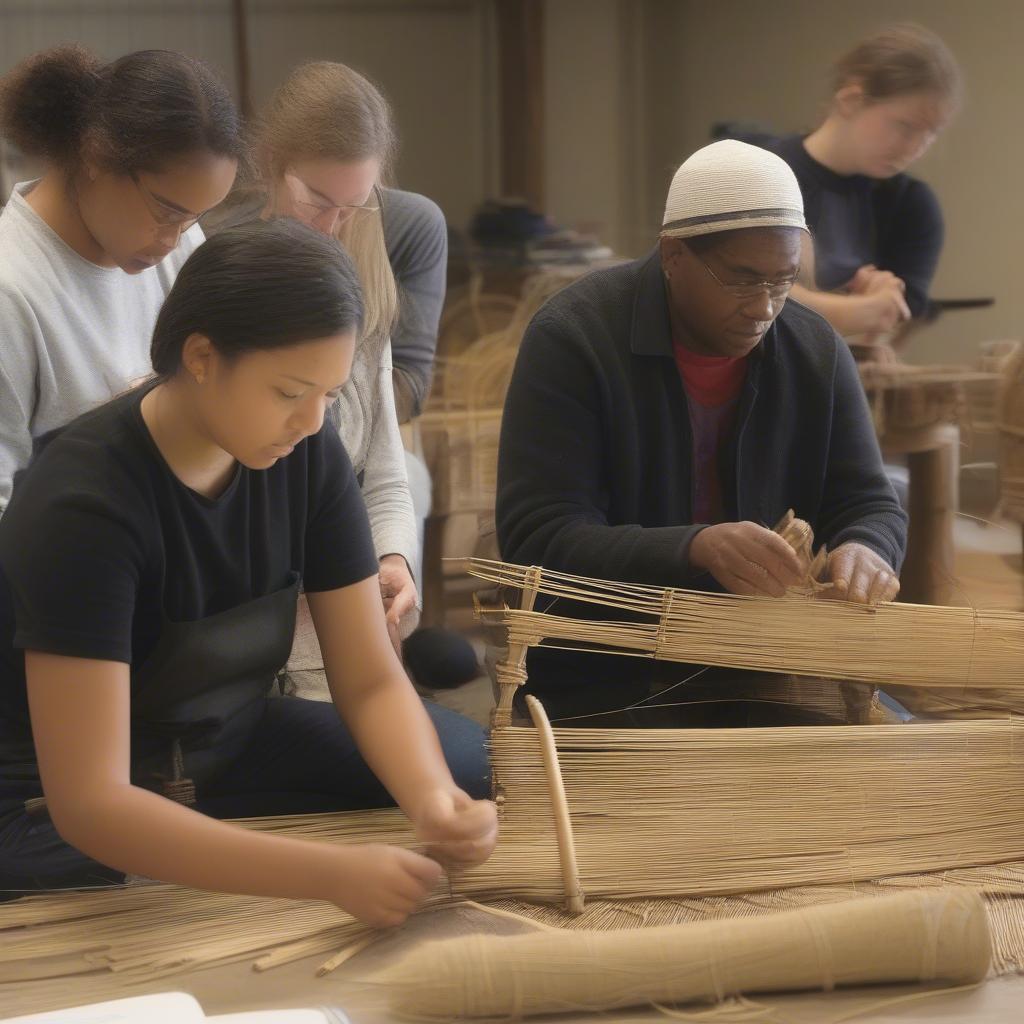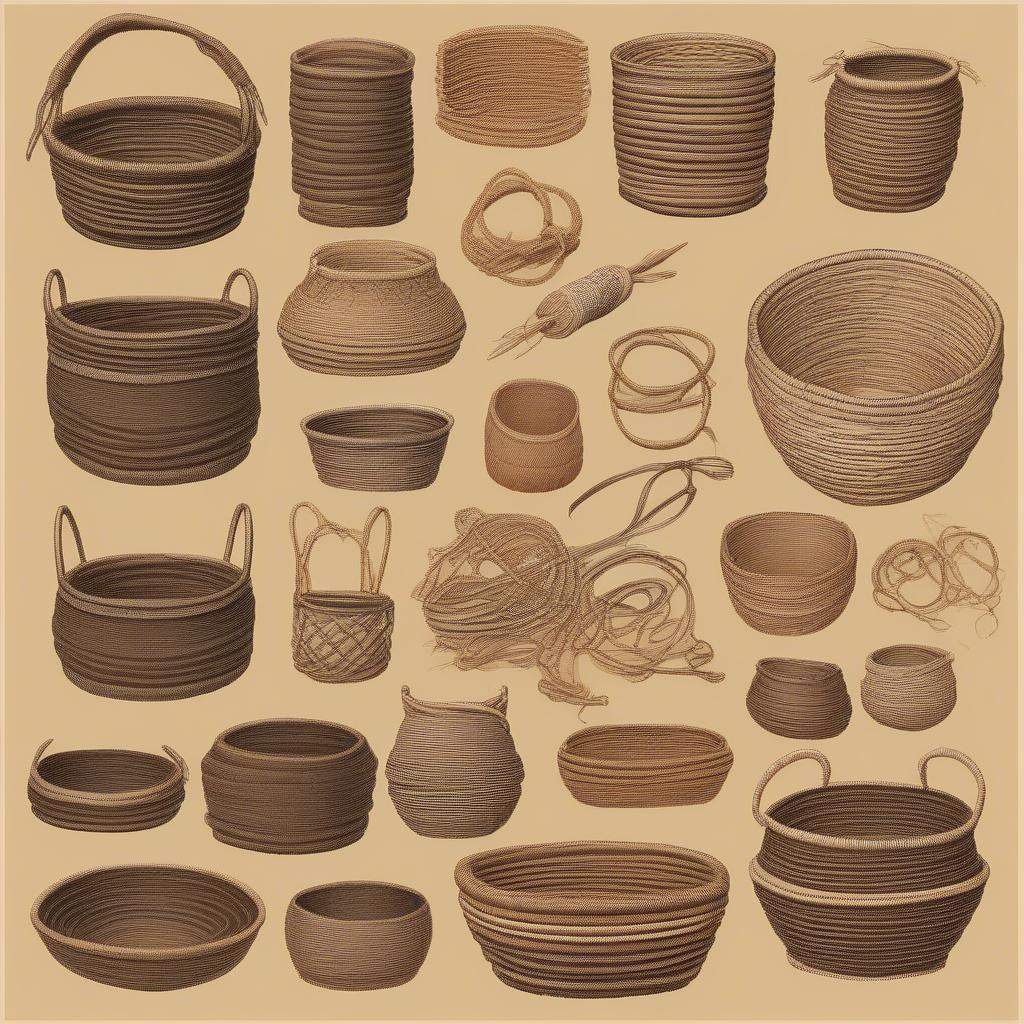Basket Weaving
Native American Basket Weaving Lesson Plan: A Comprehensive Guide
Native American basket weaving is a rich and diverse tradition passed down through generations. This comprehensive guide will equip you with a Native American Basket Weaving Lesson Plan that honors this heritage while providing a fun and educational experience.  Native American Basket Weaving Lesson Plan Introduction
Native American Basket Weaving Lesson Plan Introduction
Understanding the Significance of Native American Basket Weaving
Before diving into the lesson plan, it’s essential to understand the cultural importance of basket weaving within Native American communities. Baskets weren’t just utilitarian objects; they were and still are, artistic expressions, deeply intertwined with storytelling, ceremonies, and daily life. Different tribes developed unique weaving styles and techniques, reflecting their specific environment and cultural beliefs. how to teach basket weaving This makes exploring the specific traditions of the tribe whose weaving style you’re teaching an essential part of the lesson.
Creating Your Native American Basket Weaving Lesson Plan
A successful lesson plan requires careful planning and consideration. Here are some key components:
Materials and Preparation:
-
Gathering Materials: Introduce students to traditional and readily available materials like reeds, willow, pine needles, and sweetgrass. Discuss the significance of each material within Native American culture.
-
Preparing the Materials: Explain and demonstrate how to prepare these materials for weaving. This could involve soaking, drying, or splitting depending on the chosen material and weaving technique.
-
Tools: Introduce essential tools like awls, knives, and gauges. Emphasize safety precautions when using these tools.
Introducing Basic Weaving Techniques:
-
The Coil Start: Show how to begin a coil basket, a common technique among various Native American tribes.
-
Adding Wefts: Explain how to add wefts (horizontal elements) to the coil, gradually building the basket’s form.
-
Shaping the Basket: Demonstrate techniques for shaping the basket as it grows, from simple bowls to more complex forms.
Incorporating Cultural Context:
-
Tribal Specifics: Research and teach about the specific tribal weaving tradition you’ve chosen to focus on. This could include the Cherokee, Navajo, or Pomo, each known for their distinctive basketry.
-
Storytelling and Symbolism: Explore the stories, symbols, and designs woven into traditional baskets. Encourage students to incorporate their own stories or symbols into their creations. basket weave cliaprt
-
Respect for Tradition: Underscore the importance of treating Native American traditions with respect and understanding.
Adapting Your Lesson Plan for Different Age Groups
Adapting your Native American basket weaving lesson plan to suit different age groups ensures everyone can participate. basket weaving 4th grade
-
Elementary School: Focus on basic weaving techniques with easy-to-handle materials. Incorporate storytelling and simple designs.
-
Middle School: Introduce more complex techniques and explore regional variations in basket weaving styles. Encourage research and presentations on different tribes.
-
High School: Delve deeper into the cultural and historical context of Native American basketry. Encourage students to create their own unique designs and explore the art form as a means of personal expression.
 Native American Basket Weaving Techniques
Native American Basket Weaving Techniques
Where Can I Find More Resources for my Native American Basket Weaving Lesson Plan?
Numerous resources are available to support your lesson planning: books, online tutorials, and even local museums and cultural centers.
“Connecting with Native American artisans and cultural centers enriches the learning experience and helps ensure accurate representation of these invaluable traditions,” says Anika Thompson, a cultural educator specializing in Native American art forms.
Conclusion
Teaching a Native American basket weaving lesson plan is an opportunity to share a beautiful and meaningful art form with students. By incorporating cultural context, adapting the techniques to different age groups, and emphasizing respect for tradition, you can create a rich and engaging learning experience. This guide allows you to develop a lesson plan that is not only educational but also celebrates the enduring legacy of Native American basket weaving.
FAQ
-
What are some common Native American basket weaving techniques? Coiling, plaiting, and twining are among the most common techniques.
-
What materials are traditionally used in Native American basket weaving? Materials vary by region, but common choices include reeds, willow, pine needles, sweetgrass, and bark.
-
Where can I find authentic Native American baskets? Reputable museums, galleries, and Native American-owned businesses are good sources.
-
How can I ensure I’m teaching about Native American basketry respectfully? Thorough research, consultation with cultural experts, and emphasizing the cultural significance of the art form are crucial.
-
Are there online resources for learning about Native American basket weaving? Yes, numerous websites and online tutorials offer information and demonstrations.
-
What are some key things to include in a lesson plan for kids? Keep it simple, use easy-to-handle materials, and incorporate storytelling and age-appropriate activities.
-
How can I connect my lesson to specific tribal traditions? Research and focus on the basketry of a particular tribe, highlighting their unique techniques, materials, and designs.
For further support and resources, please see our articles how to teach basket weaving, basket weave cliaprt, and basket weaving 4th grade.
We encourage you to explore other related articles on our website for more in-depth information on various basket weaving techniques and traditions.
Need more help? Contact us at Hanoi, Vietnam or Tech Avenue, Suite 12, San Francisco, CA 94105, USA. Our customer service team is available 24/7.
